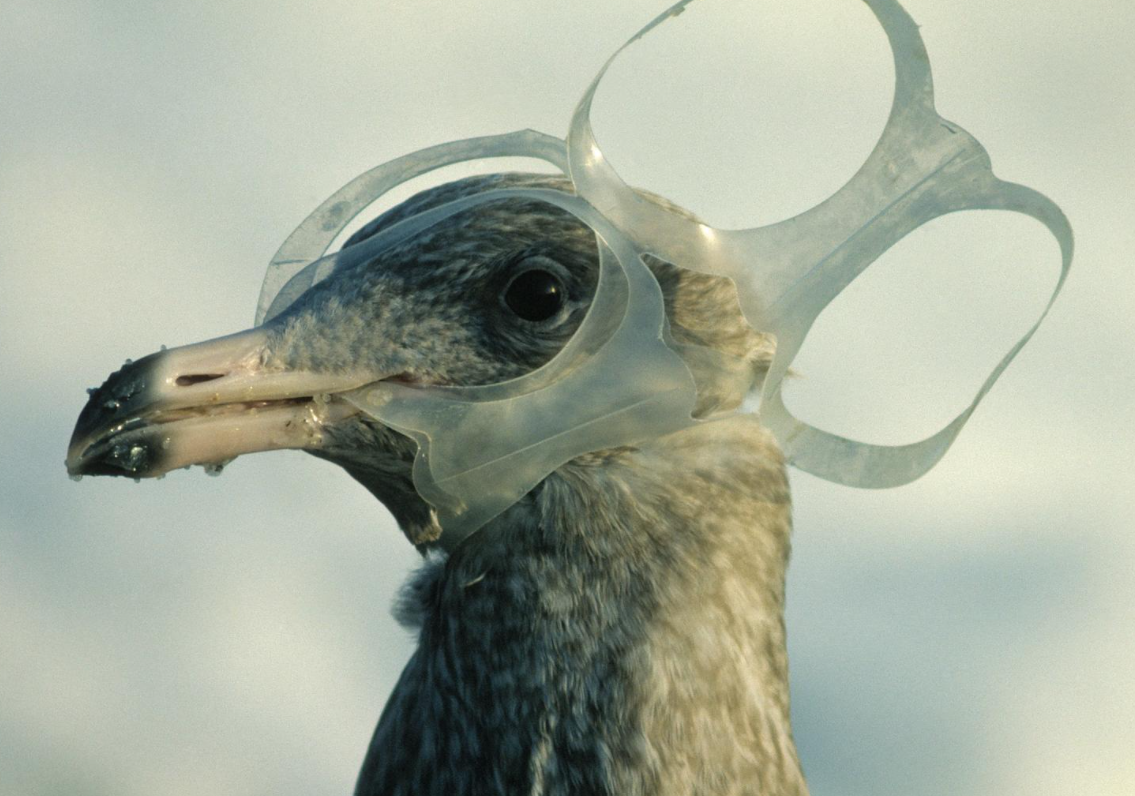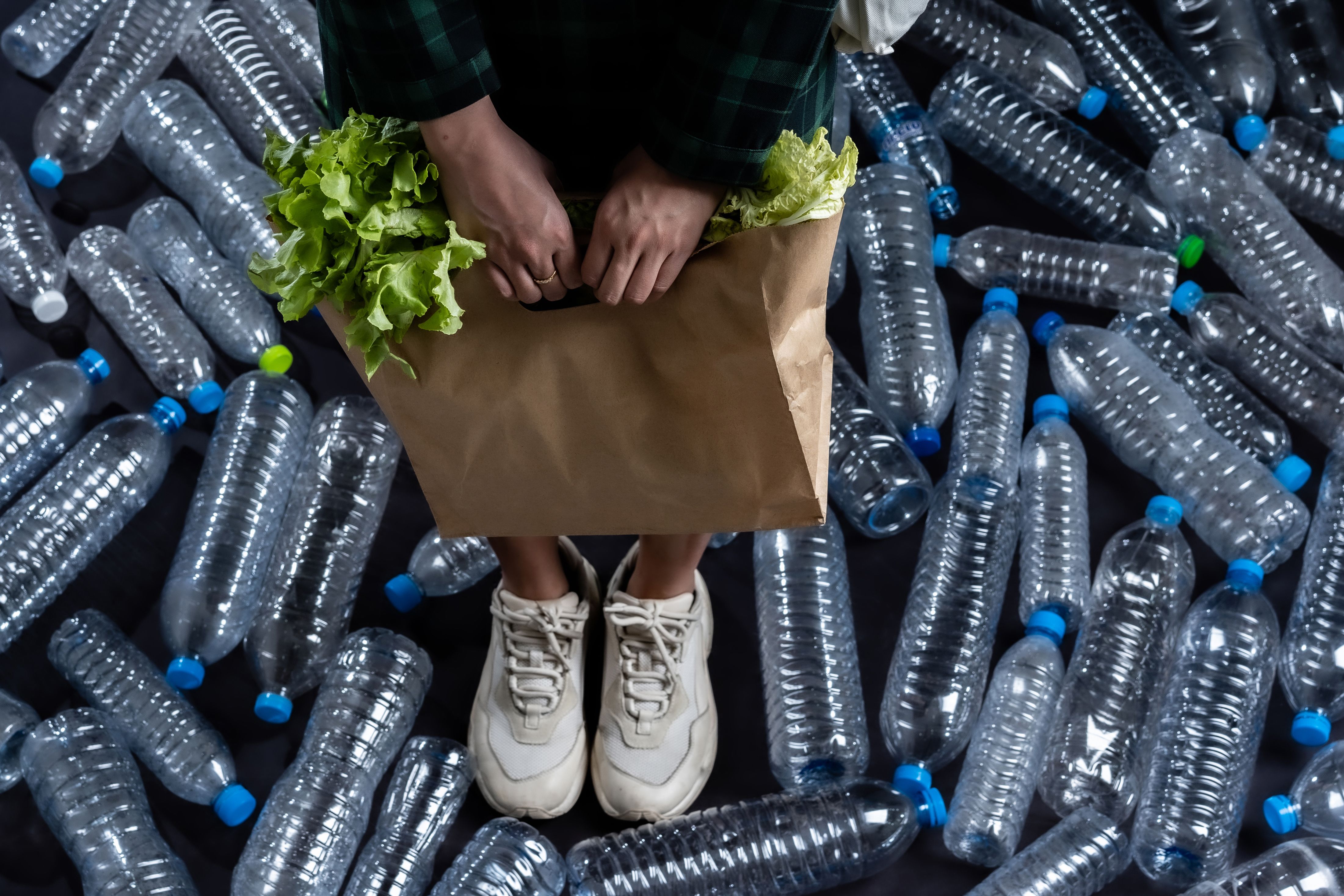A. The Facts... What are Single-Use Plastics?
As the name so eloquently coined, single-use plastics make up all plastic materials that we use once and throw away; most commonly, straws, stirs, grocery bags, takeout containers, and of course -- everyone's favorite -- the single-use water bottle. These plastics can be recycled, however, currently a very minimal amount end up in most recycling centers. All of this, you probably already know.
What you may not know is that single-use plastics are a non-biodegradable, plastic made primarily of fossil fuel-based chemicals. Plastics typically consist of a wide range of organic polymers that are molded into shape. And for those of you who don't know (like me, don't judge), polymers are substances that bond together similar materials into one molecular structure. Now, I know what you are thinking. When did we sign up for a chemistry class? But trust me...This becomes relevant later.
A 2017 study showed that half of all non-fiber plastics used comes from packaging, which, again, is single-use, and that these specific plastics have been substituted for other forms of reusable packaging that was once the norm. Things like glass refillable milk jugs, paper-bundled napkins, and even reusable wooden wicker market baskets, all were replaced with light, more affordable plastic alternatives. And though we are now moving back towards reusable items, like reusable grocery bags, there is still a large majority of us that use plastic ones and don't recycle them. In fact, New Yorkers use an average of 23 billion plastic bags per year.

B. The Statistics... How is this a problem?
"Since the 1950s, 8.3 billion metric tons of plastics have been produced, and half of that was in the past 15 years alone," according to the NRDC (National Resources Defense Council). And the biggest issue is that 91% of these plastics are not getting recycled. Thus, when plastics don't get recycled, they get thrown away, or worse yet, they become litter, street trash.
If they get thrown away, they make their journey to your local dump where they get buried. And though they are not biodegradable, they still begin to break down. At this point, the particles become so tiny, they're often too small to see with the naked eye. These particles are called microplastics (say it with me, micro-plastics). They mix with the soil and eventually become part of the ground water, which (wait for it...) heads right into our oceans. These microplastics are then ingested by many marine wildlife, including the fish we eat, which then becomes a part of our body.
These microplastics begin to release toxic chemicals as they "decay" and if they are inside us, you can only imagine what it does to the body. But just in case you can't, I'll tell you. These toxic chemicals leach into our bloodstream and inevitably disrupt our endocrine system. Chemicals, such as phthalate DEHP, a common chemical released from the breakdown of plastics, is known to be a probable human carcinogen. These toxins can cause severe chronic health issues like: cancer, infertility, birth defects, and hormone imbalance.
But let's, for a moment, forget how it affects us humans, and talk about the adverse affects of our marine life. When an animal ingests microplastics, it can cause punctured organs and/or fatal intestinal blockages. In fact, of dead seabirds and mammals collected along the shore, 90% of seabirds have shown plastic in their intestines, while 100% of sea turtles present the same affliction. If we keep up at this rate, by 2050, scientists predict that there will be more plastic in the ocean than wildlife.
It isn't just microplastics that are the source of the problem. Wouldn't that be a nice little package with a tied up bow that just urges us to recycle more. I mean, we need to, but this is only one small piece of the single-use plastic puzzle. Our current economy is linear, and if you read my article on Conscious Consumerism, you know that a linear model is where we mine for elements and resources to manufacture into products to which we sell and dispose of after use. That's it. That's where the line ends.
But, let's take a moment to think about that first step: 'Mine elements and resources.' Well, true to form, single-use plastics take fossil fuels, such as crude oils, and turn them into those tiny substances that we bond into a molecular structure, like plastic (I told you it would be relevant later...). Refineries that drill into the ocean floor, into our Earth's crust, are one of the most Greenhouse Gas-intense industries in the manufacturing sector. Alternatively, "cracker plants" that use natural gas to crack ethane molecules into chemical building blocks of plastics, secrete a carbon output in the United States alone equivalent to that of 3.8 million passenger vehicles. This is our biggest issue when it comes to Climate Change.

C. The Solution... What is the United States doing to combat this?
Now don't worry. This article isn't solely intended to fear monger and shame you for not being completely tapped into such a huge problem. You will be happy to know that the EPA (Environmental Protection Agency) has developed a fantastic plan, that is just one of a series of steps needed to be taken in order to change the trajectory of our future. This is called the National Recycling Strategy (available online for download for any of you out there who are having trouble sleeping. This will nip it right in the bud.) In it, the EPA agrees that the old model of mining for resources is a huge contributor to climate change.
"Natural resource extraction and processing activities account for approximately 50% of total Greenhouse Gas (GHG) emissions (International Resource Panel, 2019), and global resource consumption has tripled over the past four decades (United Nations Environment Programme, 2016). Reducing GHG emissions from the production, use, consumption and disposal of materials can help countries meet the Paris Agreement 1.5 C target."
By eliminating the need to mine our resources and utilize current materials that we can reuse and recycle, we can reduce an extreme amount of waste, that which wouldn't even compute to driving your car less on any sort of scale. That is how much waste single-use plastics dominate in Greenhouse Gas emissions.
Now, the National Recycling Strategy goes on for another 30 pages or so fleshing out and dissecting data as to what needs to change, why it needs to change, but ultimately it comes down to us.

D. The Solution... What can we do?
So then what CAN we do?
Well, ideally we all need to recycle more. Any bit of plastic, whether it be the packaging film around your toilet paper roll or the cup and straw from the Diet Coke you had earlier, put it in a recycle bin.
We can all use reusable grocery bags to help reduce plastic film production and recycle the plastic bags we still have at home. Most grocery stores have a plastic film recycling bin by the front door.
We can buy in bulk which typically will reduce the use of packaging.
All these, you will find, are good tips and tricks to help slow the progress of an already rampant problem. But if I could suggest one thing that you take away from this article to help eliminate your use of single-use plastics, it would be this:
**BUY A FUCKING WATER BOTTLE! **